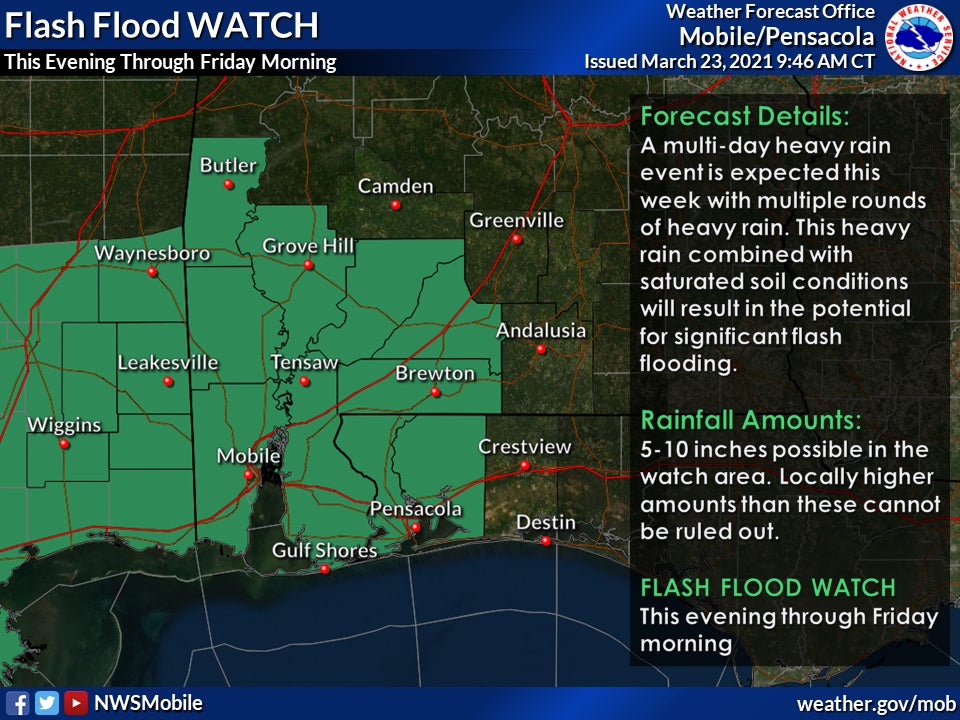Forgotten Trails
Published 1:39 am Wednesday, October 9, 2002
By By LYDIA GRIMES
Dixon artifact is found on board the H.L. Hunley
This week I want to tell you about the Confederate submarine H.L. Hunley. Some of you may have been keeping up with the raising of the submarine during the last few months. It was only recently that the turret of the sub was lifted out of the waters where it had rested for the past 138 years.
You can find information about the H.L. Hunley on the website www.history.navy.mil/branches/org, where one story about the submarine is posted.
It was a Confederate submersible that according to the Naval Historical Center showed both the advantage and danger of undersea warfare. Although it was not the first to be built, it has many ties to the state of Alabama and the city of Mobile. In fact, it was privately built in 1863 by Park and Lyons of Mobile. It was made from a iron steam boiler, which was deepened and lengthened through the addition of tapered ends. It was designed to be hand powered by a crew of nine; eight to turn the hand cranked propeller and one to steer and direct the boat in the right direction. Each end was equipped with ballast tanks that could be flooded by valves or pumped by hand pumps. Extra ballast was added by using iron weights bolted to the underside of the hull. If the submarine needed more buoyancy to rise in an emergency, the weights could be removed by unscrewing the bolts from the inside of the vessel.
February 17, 1864, the submarine made a daring attack on the USS Housatonic, an 1,800 ton sloop with 23 guns, in Charleston harbor. The Hunley rammed the Housatonic with a spar torpedo packed with explosive powder and attached to a long pole on its bow. The spar torpedo embedded in the sloop's wooden side and detonated by a rope as the Hunley backed away. The resulting explosion sent both the Housatonic with five crew members and the Hunley with its crew of nine to the bottom of the harbor. H.L. Hunley earned its place in history of undersea warfare as the first submarine to sink a ship in wartime.
The search for the Hunley ended 131 years later in 1995 when best selling Clive Cussler and his team from the National Underwater and Marine Agency (NUMA) discovered the submarine off Sullivan's Island, S.C. after a 14 year search. At the time of the discovery, Cussler and the NUMA were conducting this research in partnership with the South Carolina Institute of Anthropology and Archaeology (SCIAA). The team realized what they had discovered when they exposed the forward hatch and the ventilator box (the air box for the attachment of a snorkel). The submarine rested on its starboard side at about a 45 degree angle and was covered with almost an inch of encrustation of ferrous oxide, which in turn, was covered with sand and shells. More probing revealed that almost all of the vessel with a length of 34 feet was preserved under the sediment of the harbor.
In August 2000 the Hunley was resurrected from its watery grave. A team of professionals from the Naval Historical Center's Underwater Archaeology Branch, National Park Service, the South Carolina Institute of Archaeology and Anthropology and various individuals carried through on the process to investigate on how to raise the submarine to the surface with the least amount of damage. On August 8, 2000 it broke the surface of the water for the first time in 136 years and was greeted by a cheering crowd of onlookers. The submarine was transported to Charleston and placed in the Warren Leach Conservation Center in a specially designed tank of freshwater.
This story will conclude in next week's Brewton Standard.
In the meantime, happy hunting!




